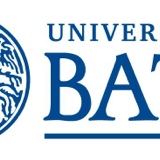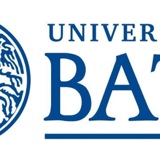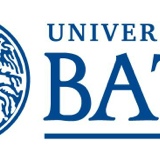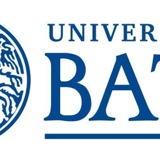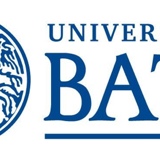DOCUMENT
Cover
-
Document No.
-
Surveillance recipient
-
Audit Title (format: surname_firstname_department_year_followup)
-
Conducted on
-
Prepared by
-
Department of this report
-
Follow up on
- SKIN
- LUNG
- HAVS
-
Document status
PERSON
PERSON REPORTING
-
First names
-
Surname
-
Address
-
Date of birth
-
National Insurance number
-
Email address
-
Phone number
-
Mobile phone number
REPORT MEETINGS
-
Meetings record
meeting
-
Meeting type
-
Meeting date
REPORT WORK ACTIVITIES
-
Department
-
Post held
-
Approximate start date in post
-
Report on work activities
work activity
-
Work activity
CHECKS MADE
SKIN SURVEILLANCE FOLLOW UP
-
Reason for inquires
SKIN HAZARDS & RISKS
-
Follow up
-
Common skin hazards are:
Agricultural type work - with artificial fertilisers, fuels, solvents, wet work, handling plants, wood dust etc;
Carpentry type work - dusts, wood preservatives, dyes, fungicides, glues, solvents, varnishes, wood dust, etc
Cleaning type work - detergents, cleaning products, solvents, wet work, etc
Construction type work - cement, dusts, solvents, wet work, building materials, etc
Metalworking - cutting oils & fluids, solvents, metal shavings, chromium metal, nickel metal, etc
Painting & decorating type work - aggressive hand cleaners, solvents & thinners, chromium, nickel, etc
Veterinarian type work - animal proteins, animal excreta and secreta, disinfectants, wet work, anaesthetics, antibiotics, antiseptics, formaldehyde, gluteraldehyde, latex, etc -
Is this person exposed to skin risks at work (such as organic solvents, oils, detergents, cleaning materials, etc)
-
Are precautions taken to prevent expose.
SKIN SYMPTOMS SUFFERED
-
Follow up
-
Does the person suffer from skin problems
-
If they suffer from a skin problem, then record what problem they suffer from and which part of the body is affected.
-
Does the condition appear to be caused or aggravated by something used at work
-
Does the condition make work more difficult
-
Treatment for skin problem
-
Are they receiving treatment for their skin problem
-
Are you seeing a doctor for the current skin problem. Have they provided any advice and guidance.
-
Confounding factors
-
Do they have any activities outside of work that may cause skin problems
RESPIRATORY SURVEILLANCE FOLLOW UP
-
Reason for inquires
RESPIRATORY HAZARDS & RISKS
-
Follow up
-
Common respiratory hazards are:
Animal and plant proteins; some wood dusts; isocyanates; and gluteraldehyde -
Is this person exposed to respiratory risks (such as wood dust, silica dust, sensitising chemicals, etc)
-
Are controls in place to prevent or reduce expoure
RESPIRATORY SYMPTOMS SUFFERED
-
Follow up
-
Life style factors that may cause respiratory symptoms
-
Does the subject smoke
-
General symptoms suffered that may indicate development of a chronic condition
-
Symptoms suffered include eye irritation, soreness or watering of eyes
-
Symptoms suffered include persistant coughs, bouts of coughing or phlegm
-
Symptoms suffered include being woken at night with coughing or chest tightness
-
Symptoms suffered include recurring blocked nose, running nose or nasal irritation
-
Specific symptoms that may indicate an existing chronic condition
-
Medical consultation for respiratory problems (eg chronic bronchitis)
-
Diagnosed as suffering from asthma
HAVS SURVEILLANCE FOLLOW UP
-
Reason for inquires
HAVS HAZARDS & RISKS
-
Follow up
-
Equipment that might cause HAVS are: chainsaws; concrete breakers & road breakers; cut off saws; hammer drills; hand held grinders; impact wrenches; jigsaws; needle scalers; pedestal grinders; polishers; power hammers & chisels; powered lawn mowers; powered sanders; scabblers; strimmers & brush cutters; etc
-
Details of past exposure to vibration
HISTORY
-
Approximate dates
-
Exposure to vibration
-
Details of current exposure to vibration
CURRENT
-
Approximate year of first exposure
-
Exposure source
-
Frequency of exposure to this source
HAVS SYMPTOMS SUFFERED
-
Follow up
-
Do they suffer from tingling of the fingers lasting more than 20 minutes after using vibrating equipment
-
Do they suffer from tingling of the fingers when not using vibrating equipment
-
Do they wake at night with pain, numbness or tingling in their hand(s) or wrist(s)
-
Do the fingers or hands go numb more than 20 minutes after using vibrating equipment
-
Have the fingers gone white on cold exposure
-
Do they have difficulty in warming fingers or hands when leaving the cold
-
Do there fingers or hands go white at any other time
-
Are they experiencing any other problems with the muscles or joints of the fingers, hands, wrists, arms or shoulders
-
Do they have difficulty picking up small objects (eg screws, button, etc)) or difficulty in gripping objects (eg container lids, pens, etc)
-
Do they have any neck, arm or hand injuries or have they had surgery to correct arm or hand injuries
-
Do they have any significant diseases of the joints, skin, nerves, heart or blood vessels that need to be taken into account
-
Are they taking any medication on a long term basis
-
Do they use any personal protective equipment to protect from the effects of vibration
SIGNATURES
Signatures
-
Person completing this report
-
Subject of this report
-
Others in attendance at the meeting
attendees
-
Signature
OUTCOME
Further action required
-
Respiratory surveillance follow up outcome
-
Skin surveillance follow up outcome
-
HAVS surveillance follow up outcome
Recomendations
-
Add recommendations and further actions needed
RECOMMENDATION
-
Title - short one liner
-
Department to action
-
Recomendation
-
Target date for completion
Signature
-
Person completing this report
